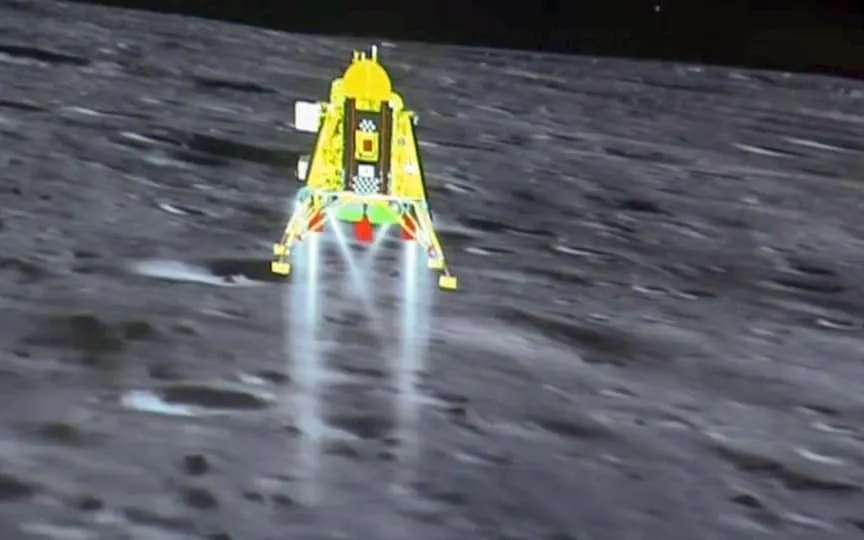ISRO’s Vikram Lander Makes Exciting Discovery on the Moon – Learn More About This Triumphant Moment for India’s Space Program
India’s Chandrayaan-3 mission has made history in space exploration by accomplishing an extraordinary feat – the successful landing of the uncrewed Vikram Lunar lander near the mysterious South Pole of the Moon. This remarkable achievement, carried out by the Indian Space Research Organization (ISRO), has not only established India as the pioneer in exploring this lesser-known lunar area but also made it the fourth country worldwide to achieve a gentle touchdown on the Moon.
The Chandrayaan-3 mission touched down about 373 miles from the Moon’s south pole, opening the door to groundbreaking discoveries. Equipped with state-of-the-art scientific instruments such as the Pragyan rover, this lunar exploration has revealed important insights into the Moon’s composition and geological history.
Vikram Lander detects movement on the Moon
One of the most shocking and astonishing revelations came from the Vikram Lander, which houses the Instrument for Lunar Seismic Activity (ILSA). This instrument is the first Micro Electro Mechanical Systems (MEMS) technology on the Moon. It played a key role in revealing seismic activity on the lunar surface on August 26, 2023. In fact, it recorded a moonquake that resembles earthquakes. It has detected the first seismic activity on the Moon in decades.
Seismic activity is the frequency and severity of earthquakes in a given area. However, seismic activity on the moon is caused by separate sources, such as thermal fluctuations triggered by solar activity or the effects of celestial bodies. “The primary objective of ILSA is to measure ground vibration generated by natural earthquakes, shocks and artificial events,” as shared by ISRO on its official website.
The movement of the Vikram Lander on the lunar surface allowed ILSA to record these seismic rumbles, providing scientists with valuable data to analyze. In addition, these seismic readings can also act as indicators of other lunar events.
Advances in technology allow scientists to revisit data collected from previous missions and learn about the mysterious interior of the Moon. According to a 2011 NASA study, the Moon likely has a core of liquid iron surrounding a dense, solid ball of iron. Scientists in May 2023 suggested that blobs of molten mantle could break away from the core, rising to the surface as iron lumps, triggering movements on the moon.
With the Chandrayaan-3 mission at the forefront of lunar exploration, the scientific community eagerly awaits new discoveries that could deepen our understanding of the Moon’s past and present, and perhaps even shed light on the larger dynamics of celestial bodies in our solar system.




